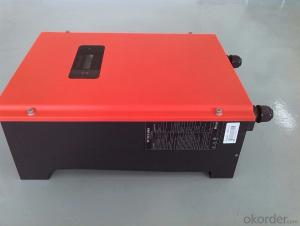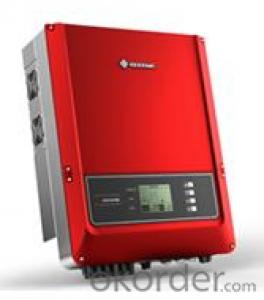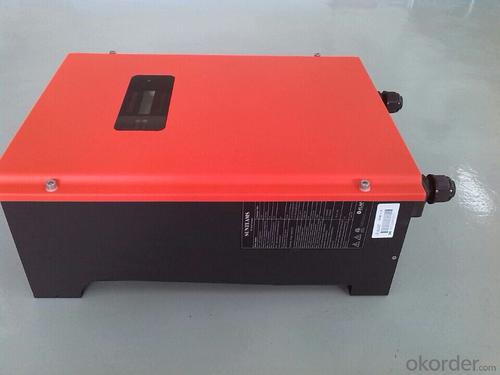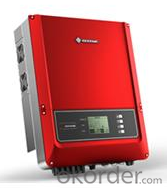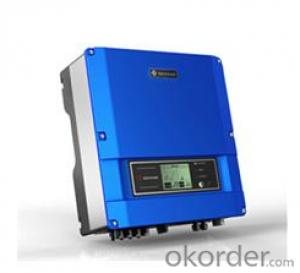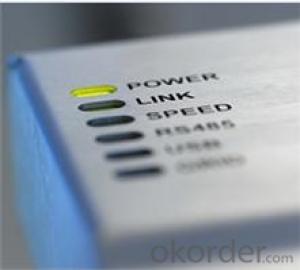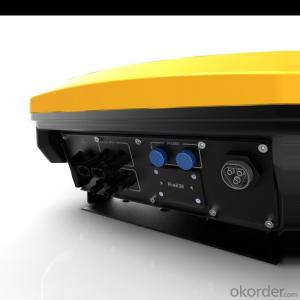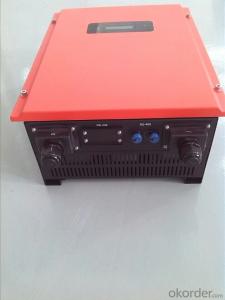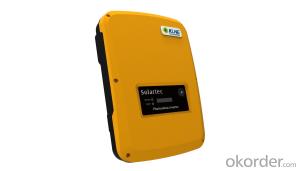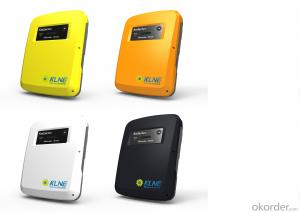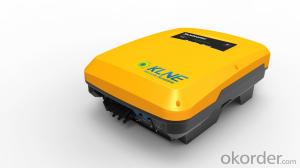Solar Inverter Plus Battery - Off-Grid Type Solo-600 Series
- Loading Port:
- Shanghai
- Payment Terms:
- TT OR LC
- Min Order Qty:
- 10 unit
- Supply Capability:
- 1000 unit/month
OKorder Service Pledge
OKorder Financial Service
You Might Also Like
Product Description:
This system can keep 5 energy-saving bulbs with 15W working for 5 hours per day and a 5W radio working for 8 hours a day. The AC load can keep a 28in color TV (70W) working for 5 hours, a 70W phonograph record machine working for 5 hours, and a fan less than 60W running for 5 hours.
It can work for 3 successive rainy days.
Powered by DC current
Can used out of doors
High effiency and low noise
FAQ
What is your payment terms?
We accept T/T payment, normally we need 20% T/T in advance, 80% payed before shipment.
What is your packing system?
We put the sistem in the wooden box.
Can you do OEM service?
Yes we can, but we need to do it with a certain order quantity.
● System voltage:24V
Ø ● Output:220VAC/50Hz
Ø ● Power:600VA Product Datasheet: Main accessories Specifications No. Notes Inverter Solo-600 1 Standard PV modules Polysilicon 100Wp 6 pieces Optional Storage battery Lead acid, maintenance-free,12V/200Ah 4 pieces Optional Controller Solo-VS24V/30A 1 unit Optional PV accessories shelf Simple type 1 set Optiona
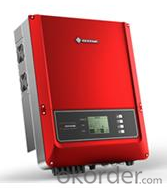
Product Advantages:
- Q: What is the role of a solar inverter in preventing electrical faults?
- The role of a solar inverter in preventing electrical faults is to convert the direct current (DC) generated by solar panels into alternating current (AC) that can be used to power electrical devices. By regulating the voltage and frequency of the AC output, it ensures that the electrical power is stable and suitable for consumption. Additionally, solar inverters have built-in protective features such as ground fault protection, overvoltage protection, and short-circuit protection, which help detect and prevent electrical faults that may occur within the solar power system.
- Q: Can a solar inverter be used with a generator?
- Yes, a solar inverter can be used with a generator. In fact, using a solar inverter in conjunction with a generator can provide a more reliable and efficient power supply. The solar inverter can convert the DC power generated by the solar panels into AC power, which can then be used to power various appliances and devices. When the solar panels are not producing enough electricity, the generator can kick in to provide additional power, ensuring a continuous and stable energy supply.
- Q: Can a solar inverter be integrated with energy management systems?
- Yes, a solar inverter can be integrated with energy management systems. Solar inverters can be connected to energy management systems to monitor and control the generation and consumption of solar energy. This integration allows for better optimization of energy usage, real-time monitoring of solar production, and intelligent management of energy flows within a building or grid.
- Q: Can a solar inverter be used with other renewable energy sources like wind or hydro power?
- Yes, a solar inverter can be used with other renewable energy sources like wind or hydro power. Inverters are designed to convert the direct current (DC) generated by these renewable sources into alternating current (AC) that can be used to power homes or businesses. By integrating multiple renewable energy sources through a single inverter, it becomes possible to create a more diverse and reliable renewable energy system.
- Q: How do you connect solar panels to a solar inverter?
- To connect solar panels to a solar inverter, you need to follow a few steps. First, ensure that the solar panels are properly installed and positioned to receive maximum sunlight. Then, connect the positive and negative terminals of each solar panel in series or parallel, depending on the system design. Next, connect the positive and negative terminals of the solar panel array to the input terminals of the solar inverter. Finally, double-check all connections and wiring to ensure they are secure and tight.
- Q: How do I choose the right solar inverter for my system?
- When choosing the right solar inverter for your system, there are a few key factors to consider. Firstly, you need to determine the size and capacity of your solar panel system. This will help you determine the appropriate power rating for the inverter. Additionally, consider the type of inverter you need - string inverters are suitable for larger systems, while microinverters or power optimizers may be more suitable for smaller or shaded systems. It is also important to check the inverter's efficiency, warranty, and compatibility with your solar panels and battery storage, if applicable. Lastly, consider your budget and any specific features you may require, such as monitoring capabilities or grid-tied functionality. Consulting with a professional solar installer can also provide valuable guidance in selecting the right solar inverter for your specific system.
- Q: What is the function of a solar inverter in a solar power system?
- The function of a solar inverter in a solar power system is to convert the direct current (DC) electricity generated by the solar panels into alternating current (AC) electricity, which is the type of electricity that is used in homes and businesses. This conversion allows the solar power system to feed electricity into the grid or power household appliances directly.
- Q: How does a solar inverter handle reactive power?
- A solar inverter handles reactive power by using power factor correction techniques. It actively manages the flow of reactive power between the solar panels and the grid, ensuring that the power factor remains close to unity. This helps to optimize the efficiency and performance of the solar system, while also maintaining the stability of the grid.
- Q: Are there any noise or vibration concerns associated with solar inverters?
- Yes, there can be noise and vibration concerns associated with solar inverters, although they are generally minimal. Some older or lower-quality inverters may produce a humming or buzzing sound, especially when operating at high power levels. Vibrations can also occur due to the internal components and fans. However, modern inverters are designed to minimize noise and vibrations, and most people find them to be quiet and unobtrusive.
- Q: Can a solar inverter be used with energy storage systems?
- Yes, a solar inverter can be used with energy storage systems. In fact, it is a crucial component in connecting solar panels with energy storage batteries. The solar inverter converts the direct current (DC) electricity generated by the solar panels into alternating current (AC) electricity, which can be used to power appliances and charge the energy storage system. Additionally, the inverter also manages the flow of electricity between the solar panels, energy storage system, and the grid, ensuring efficient and reliable power supply.
Send your message to us
Solar Inverter Plus Battery - Off-Grid Type Solo-600 Series
- Loading Port:
- Shanghai
- Payment Terms:
- TT OR LC
- Min Order Qty:
- 10 unit
- Supply Capability:
- 1000 unit/month
OKorder Service Pledge
OKorder Financial Service
Similar products
Hot products
Hot Searches
Related keywords
